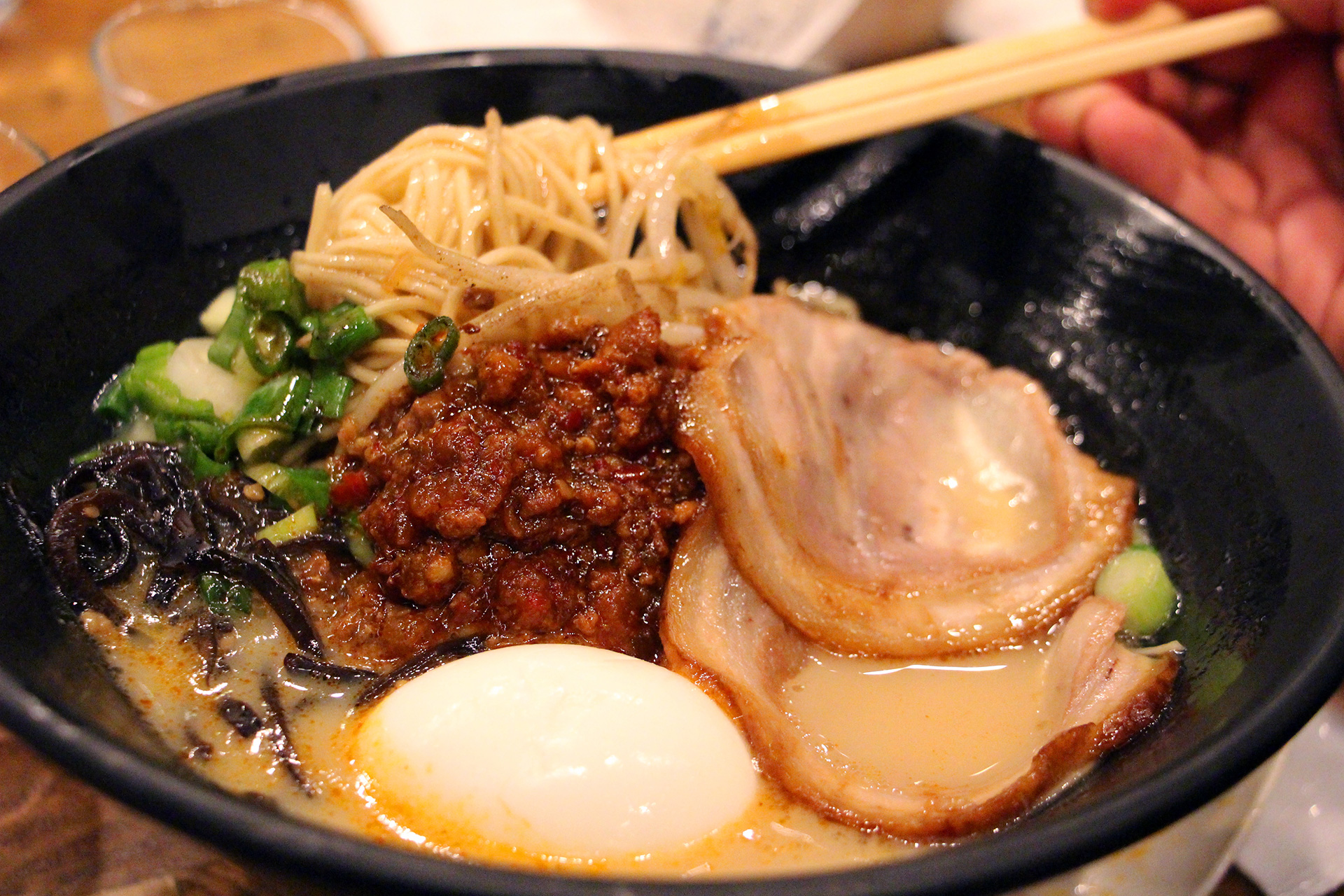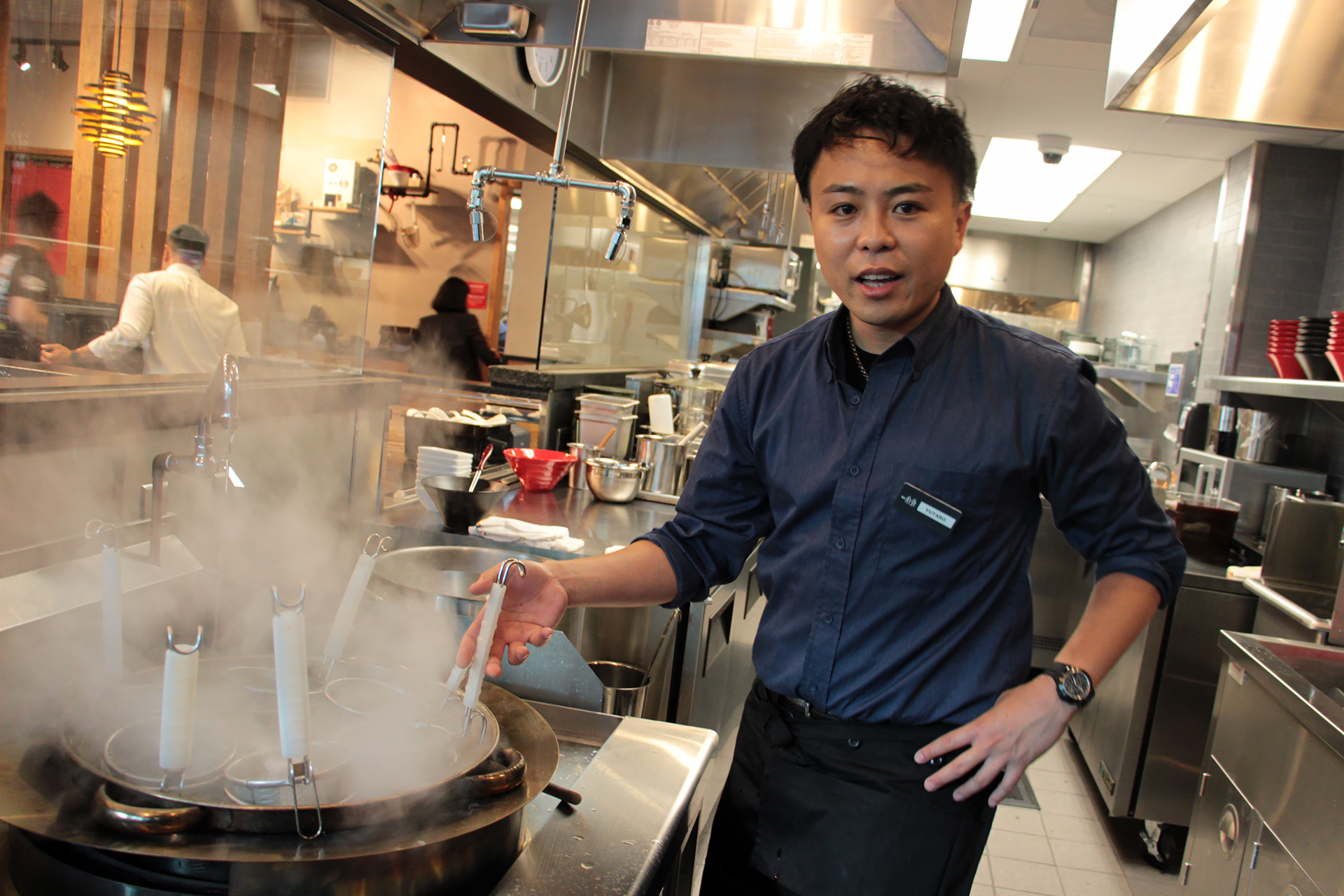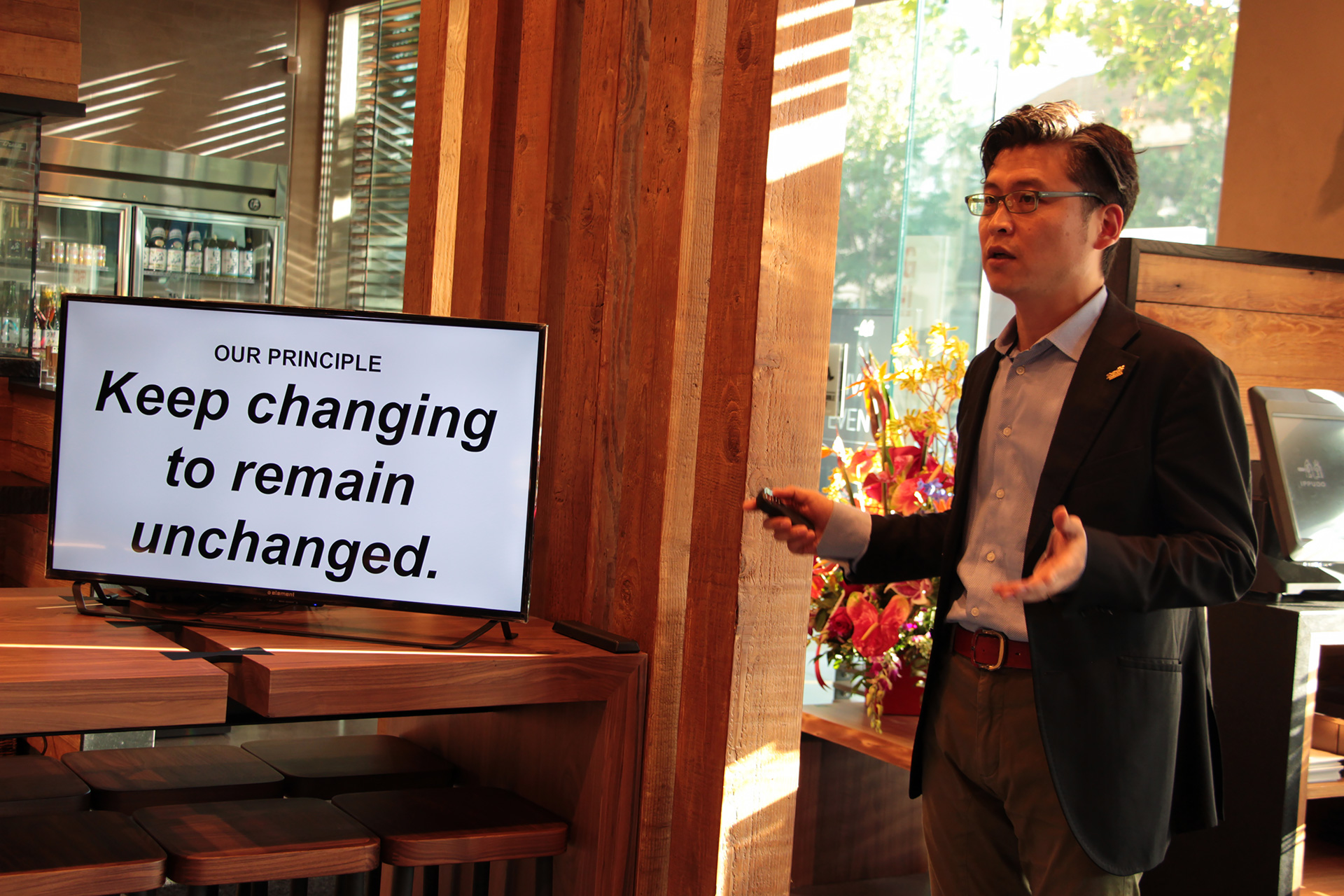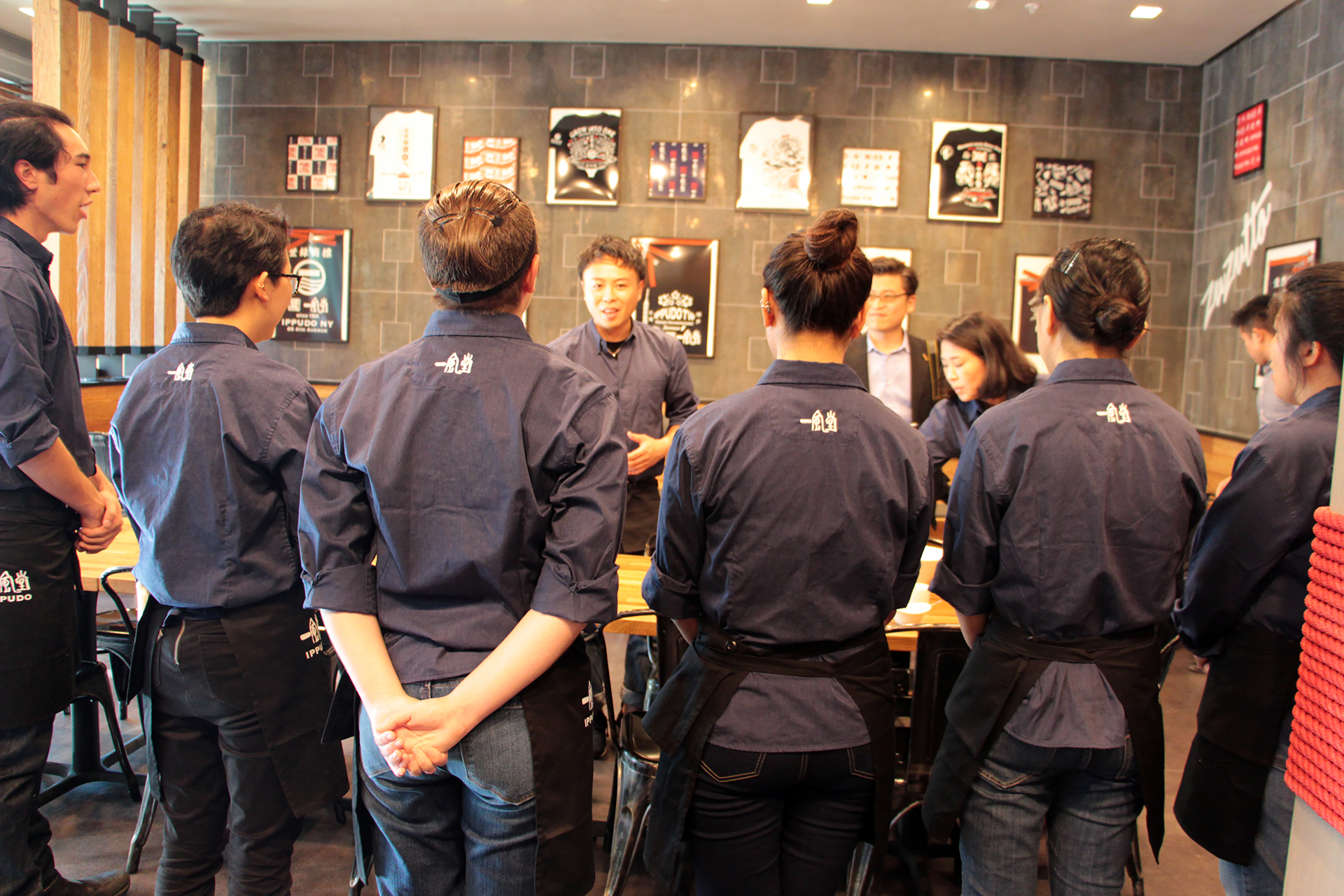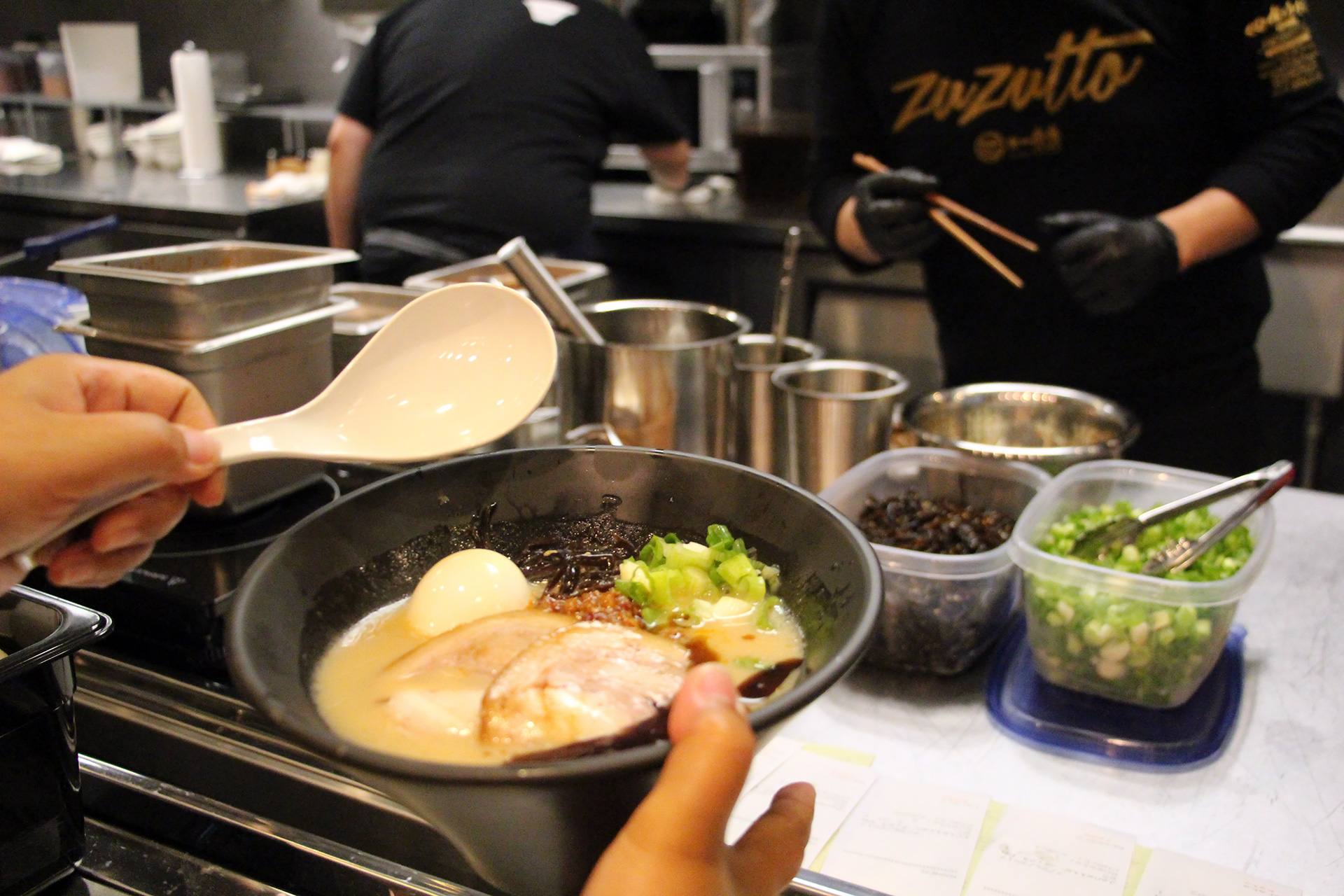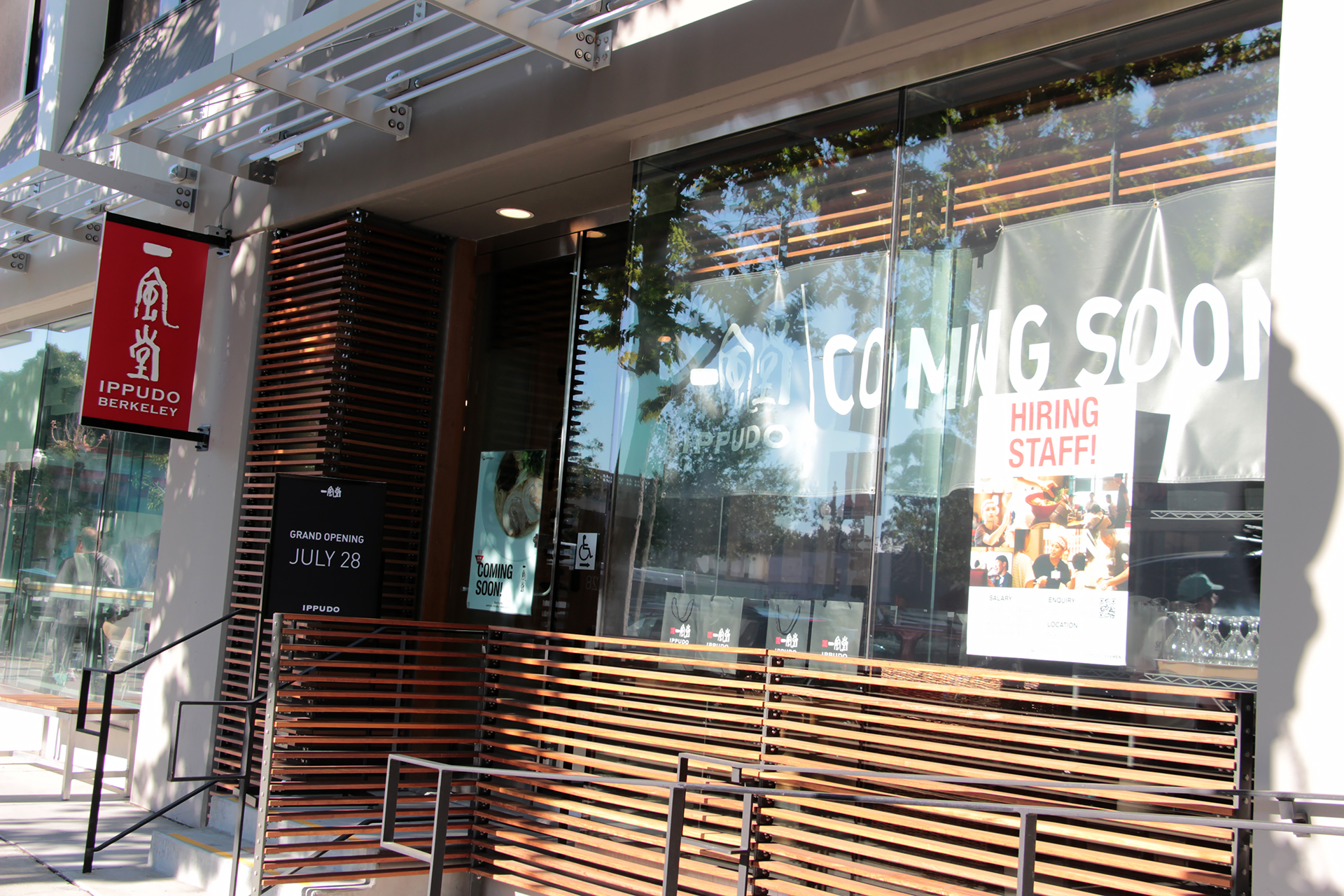Noodles made on site and bone broth simmered for 20 hours are two of the keys to Ippudo’s superior quality.
Signs all over the handsome new space, with a golden-hued, wood-centric dining room and a gleaming stainless-steel kitchen with steam rising in various sections, have “zuzutto” written on them: slurp noisily. Say the word out loud: zuzutto! It’s onomatopoeic, and while Americans have a hard time with the concept, slurping one’s ramen actually helps increase one’s enjoyment of it, dispersing the aromatics into the nether reaches of the palate and up into the retronasal canal.
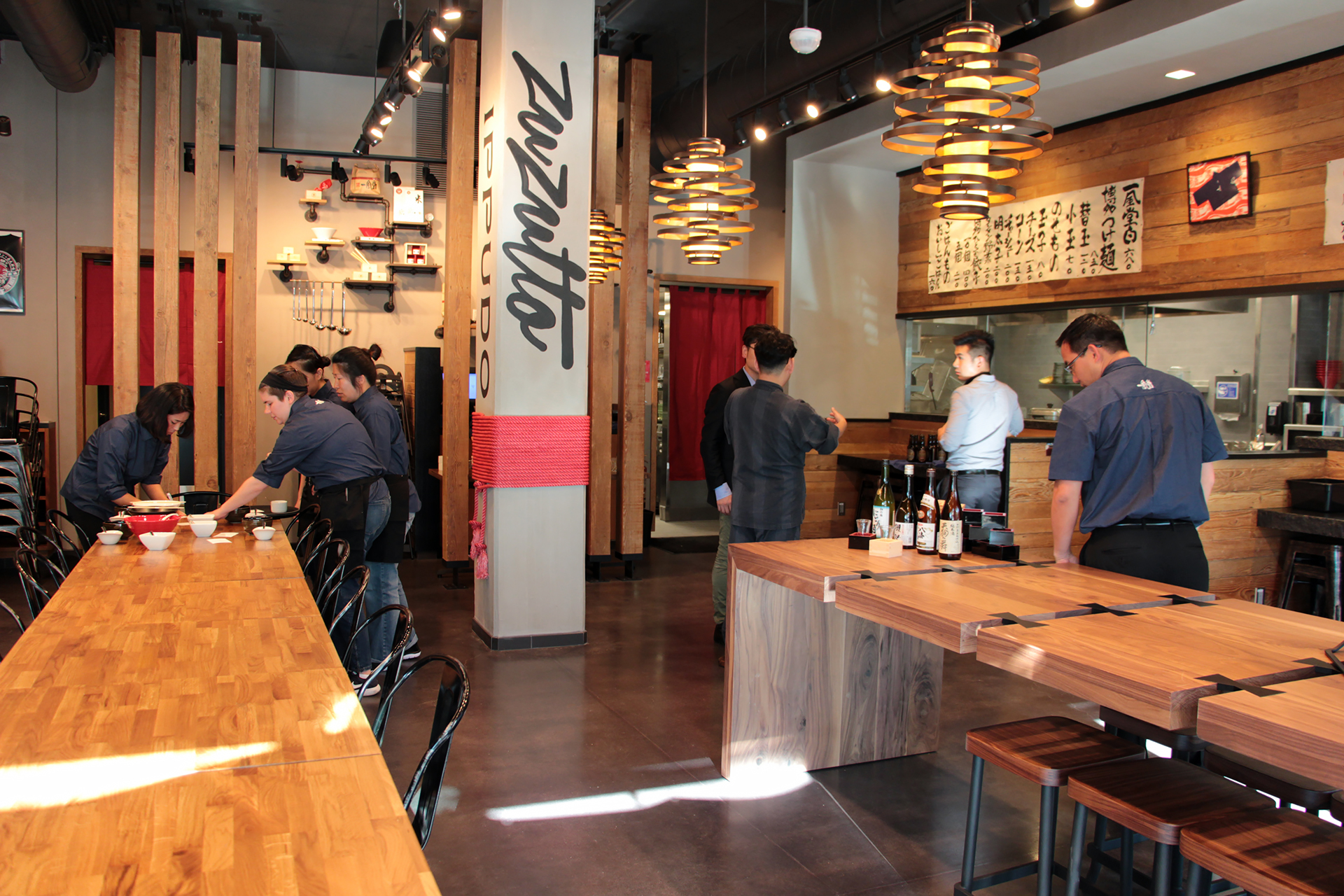
Let’s cut to the chase: It’s worth it. Vow to yourself in advance not to complain about the long lines you’ll inevitably encounter, because waiting for ramen this good is a small price to pay for such game-changing deliciousness. Call it a gift, even, an opportunity to anticipate pleasure. Ippudo, the Japanese ramen chain founded by ramen master Shigemi Kawahara in Fukuoka in 1985, has not been diluted by its expansion throughout Asia, then into New York, London, Australia, and now Berkeley (soon to be followed by San Francisco). That’s partly because the restaurant’s vision has remained consistent: Keep changing to remain unchanged. And because the noodles and the pork broth that form the heart of these steaming bowls are made every day on site.
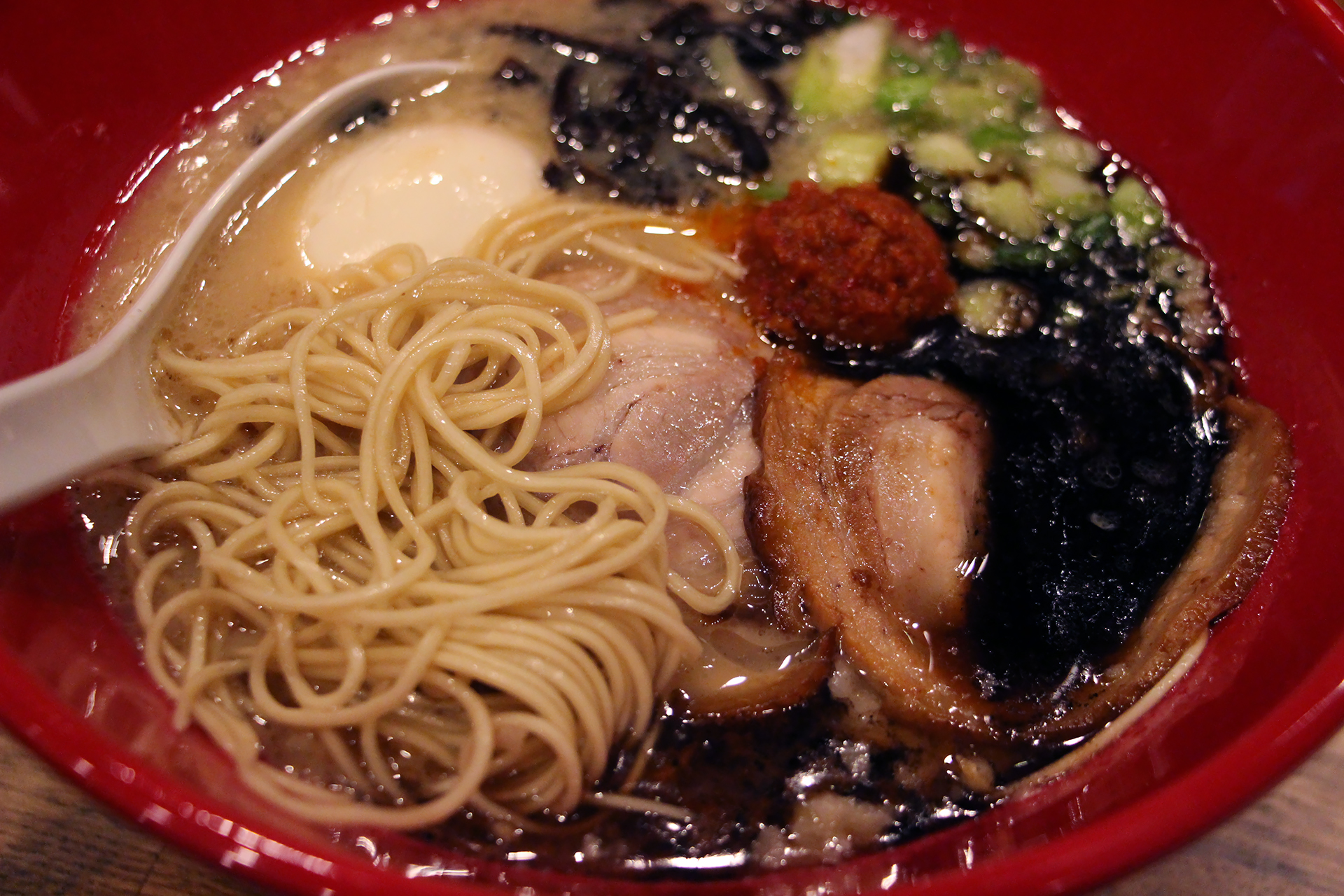
The most stereotypical American view of homemade pasta might be the image of an Italian grandmother bearing all her weight on a wooden roller, working the dough that will become any number of possible pasta shapes. But homemade pasta in Ippudo’s ramen state of mind is higher-tech. A giant machine in the back room holds a roll of dough in one long, flat sheet, tidy as new roll of paper towels, just mixed by an adjacent large machine. With the flip of a switch, the dough rolls out and is cut, then calibrated by hand-measuring. Once the machine is properly set, the ramen maker scoops up each batch (enough for a big bowl), then gently folds it and lays it out to dry in a little nest-like bunch, serving by serving. Where Italian pasta-making is a flexible art, ramen making of this variety is a precision skill.
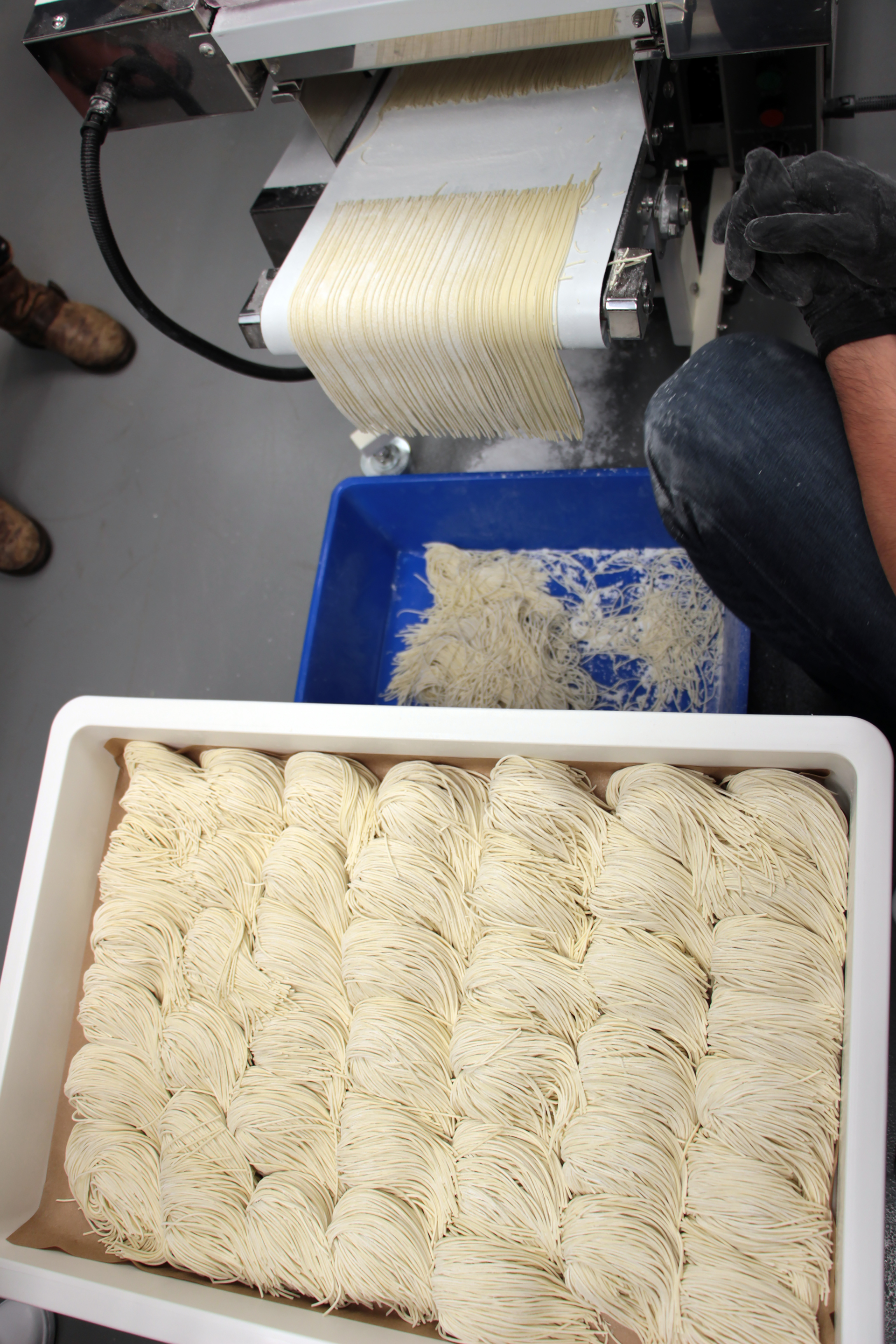
As important as the noodles are to the ramen equation, even more important is the broth, and I would argue that Ippudo’s approach to broth is what gives it a leg up on any competition I’ve tried, including the wonderful Ramen Shop, which has a more local-seasonal approach and is admittedly more creative. Ippudo is going more for a carrying out of longstanding tradition than a reinvention of the wheel. Big buckets of pork bones are dropped into pots of boiling water nearly three feet tall and kept on simmer for more than 20 hours. The style of ramen you order depends on how much lard is added back in to the finished dish.

